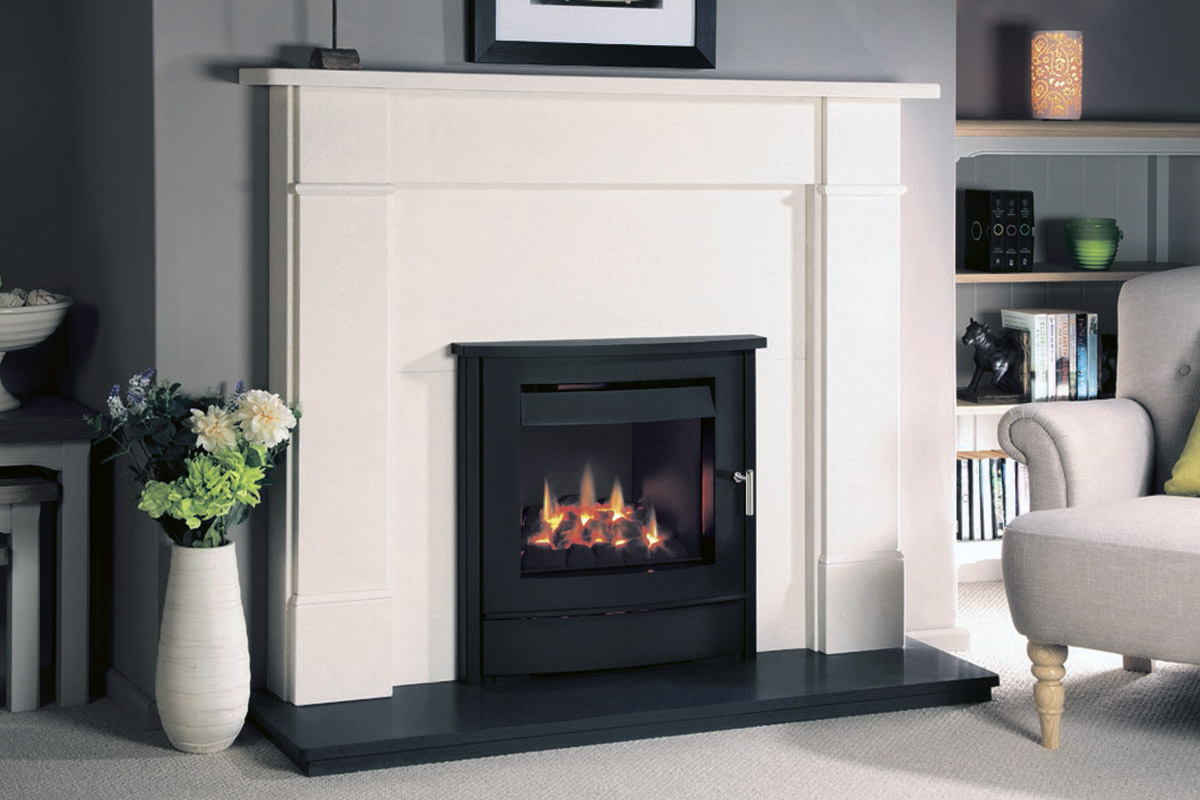Gas fireplaces have become a popular alternative to traditional wood-burning fireplaces, offering convenience, efficiency, and versatility.
With a gas fireplace, you can enjoy a cozy fire without the mess and hassle of chopping, hauling, and storing wood. But how do gas fireplaces work?
In this article, we will explore the basics of how gas fireplaces work, including the components involved and the different types of gas supply.
The Basics Of “How Does A Gas Fireplace Work”
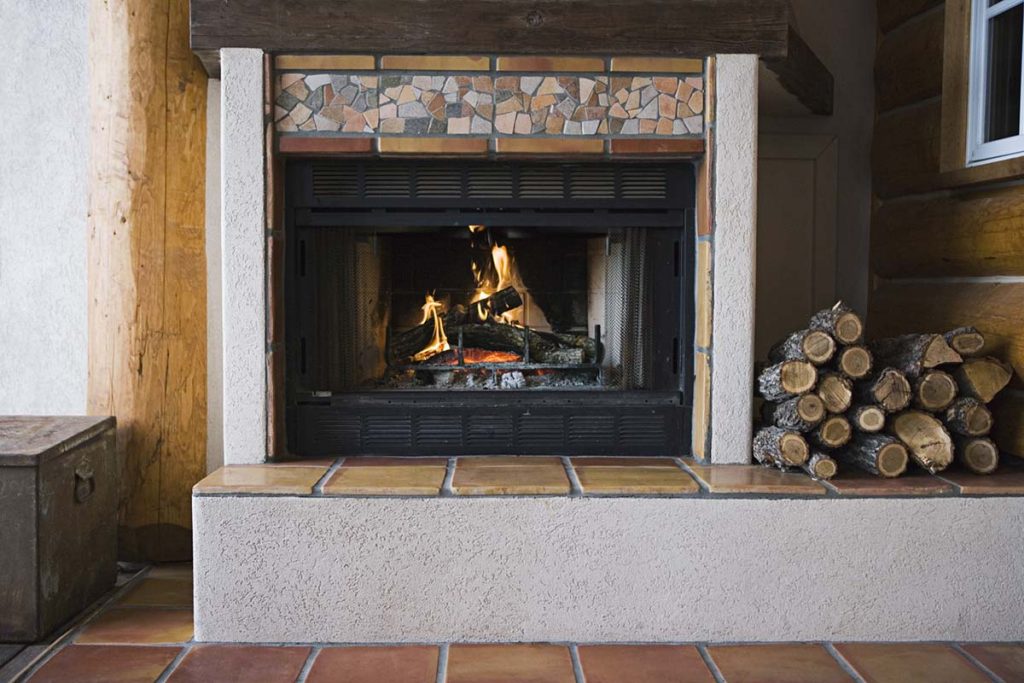
When it comes to operating a gas fireplace, there are a few basic concepts to understand. First, a source of fuel, either natural gas or propane, supplies gas fireplaces through a pipeline or tank. The gas is then fed to the burner, which is located inside the firebox.
To ignite the gas and create flames, fireplaces typically use one of two ignition methods: a standing pilot flame or electronic ignition. A standing pilot flame is a small flame that remains constantly lit, while electronic ignition uses a spark to ignite the gas when you turn on the fireplace.
Once you ignite a ventless gas fireplace, the flames heat up the logs or other media placed on top of the burner, creating the appearance of a real fire. To regulate the temperature and height of the flames, gas fireplaces often come equipped with a control panel or remote.
In addition to the burner and ignition system vented gas fireplaces, the venting system is another important component to consider. Gas fireplaces require proper venting to remove waste gases and ensure safe operation. The type of venting system used will depend on the specific gas fireplace models and installation location.
By understanding these basic concepts, you’ll better understand how gas fireplaces work and what factors to consider when operating one.
Types of Gas Supply

When it comes to fueling a gas fireplace, you can choose between two main options: natural gas or propane (LP). Natural gas is popular for its cost-effectiveness and easy availability through pipelines connected to gas utilities.
On the other hand, propane is a common alternative in areas where natural gas is unavailable and requires storage in a tank on the property. Consider factors like availability, cost, and convenience when making this decision.
Regardless of your option, ensure proper installation and maintenance for safe and efficient operation.
The Electricity Supply
When installing a gas fireplace, we need to consider the electricity supply. Even though most gas fireplaces do not need electricity, some models may require it to run electronic components such as an electronic ignition or a blower fan that circulates warm air throughout the room.
That’s why ensuring your fireplace is connected to a reliable power source and that the electrical components are working properly is crucial.
We should also follow the manufacturer’s instructions and comply with any local building codes or regulations while installing or servicing the electrical components of a gas fireplace.
To keep the electricity and gas supply line of our gas fireplace safe and reliable, we should maintain and inspect it regularly.
Burner Basics
Gas fireplace burners are the heart of the heating system and have several components that work together to produce a beautiful flame. The main components of a gas burner include the burner itself, the control valve, the pilot light, and the thermocouple.
When the burner regulator the gas fireplace is turned on, the control valve opens, allowing gas to flow to the burner. The pilot light ignites the gas and produces a small flame. This flame heats up the thermocouple, which generates a small electrical current that signals to the control valve that it is safe to open fully, allowing more gas to flow to the burner.
As the gas flows through the burner, it mixes with air to produce a clean-burning flame. The flame’s size, shape, and combustion process are determined by the burner’s size and shape, and many burners are designed to create a realistic fire effect.
Modern gas fireplaces often incorporate advanced burner systems, which you can control using a remote control or wall switch. These controls enable you to adjust the flame height and heat output to your desired level for a more customized and comfortable experience.
Logs and Other Media?
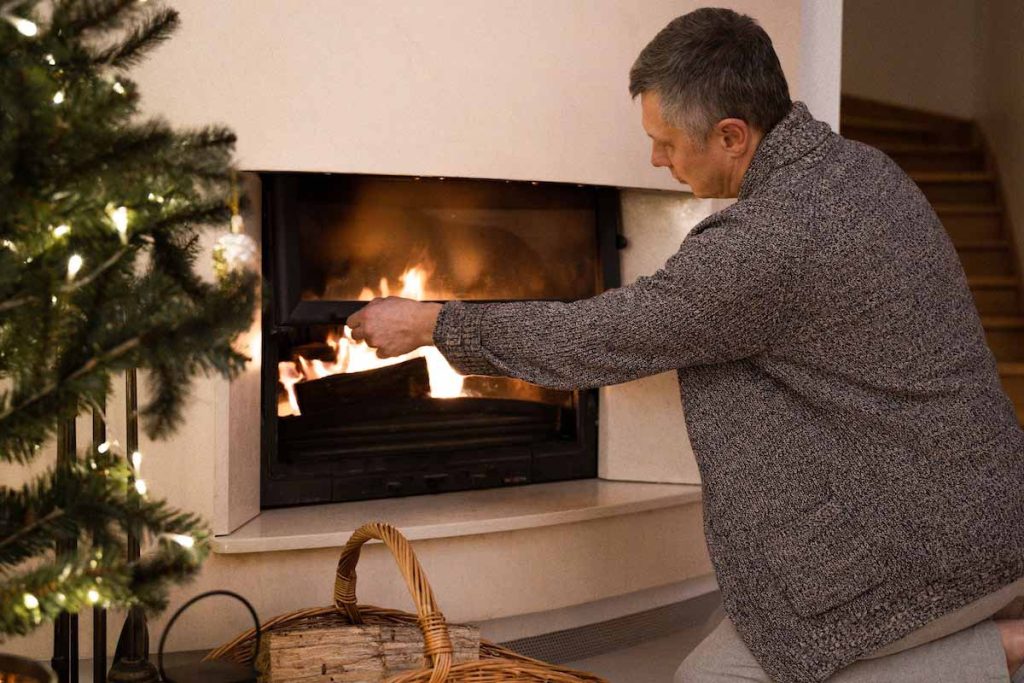
Regarding gas fireplaces, I love how many options there are for creating a realistic fire effect. There’s something for everyone when it comes to logs and other media!
I think traditional gas logs are a great option for a classic fireplace look. Manufacturers construct them from ceramic material or refractory materials, creating a resemblance to real wood logs with realistic bark and wood grain patterns. This construction makes them highly convenient to use.
But for a more modern or minimalist look, fire glass and fire beads are cool. These small pieces of tempered glass come in different colors and can be arranged in different patterns to create a unique fire effect. They don’t give off as much heat as traditional fireplace logs but look sleek and contemporary.
Other options include ceramic stones, driftwood, fire shapes, and fireballs. It’s all about finding the media that best fits your style and the overall look of your home.
No matter what type of media you choose, ensure it’s compatible with your gas fireplace and installed properly for safe and efficient operation.
Firebox Basics
The firebox is the heart of a gas fireplace, where the magic of a warm and cozy atmosphere comes to life. It is located inside the gas fireplace insert and is made of steel or cast iron that can withstand high temperatures.
Inside the firebox, manufacturers use heat-resistant materials like ceramic fiber to line the walls. This lining ensures that the fire doesn’t damage the firebox and helps to reflect heat into the room.
Gas fireplaces come in two types of fireboxes: vented and vent-free. Vented fireboxes have a venting system that expels the combustion gases and moisture outside the home. This makes them a good option for those who want to reduce indoor humidity levels, but they require a bit more installation effort.
Fireboxes can also feature decorative elements such as logs or other media that mimic the look of a real wood-burning fireplace. These elements can help create a more realistic and visually appealing fire effect, and some fireboxes even have interior lighting that can enhance the flame’s appearance.
Ignition Methods
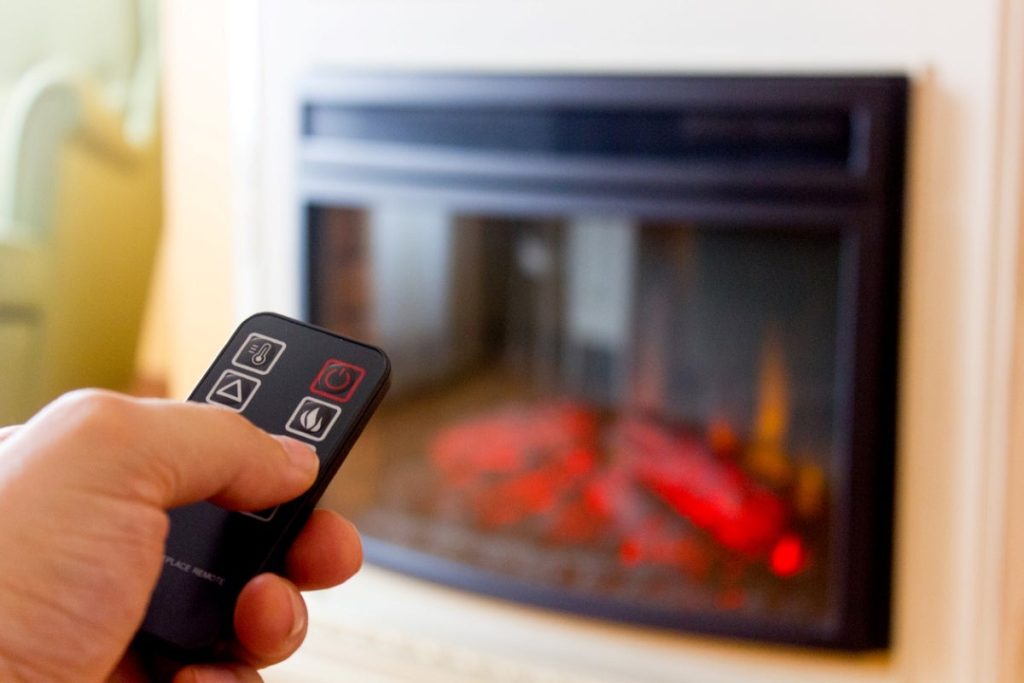
Gas fireplaces can be ignited using a control panel, remote or switch, or manual ignition with a long lighter. Using a control panel is the most common method and involves opening the access panel, turning on the gas supply, and igniting the main burner flames with a spark ignitor or pilot light.
A remote or switch provides convenience and can turn the fireplace on or off from a distance. Manual ignition with a long lighter is a backup method if the other methods fail.
Adjusting the Flames & Heat Output
Gas fireplaces offer the flexibility to adjust the flames and heat output according to your preference. With a control panel, you can increase or decrease the flame size, affecting the heat produced.
Additional controls to adjust the hot air supply can help fine-tune the flames and heat output. This allows you to create a comfortable and personalized ambiance in your home.
Venting Options
Proper venting is essential for the safe operation of fireplaces. Venting expels combustion gases and moisture outside the home.
Vented fireplaces have a venting system that connects them to the outside, directing combustion air and gases outside through a chimney or vent. On the other hand, vent-free fireplaces do not require venting, but they can impact indoor air quality.
Enhancing the Fireplace Experience
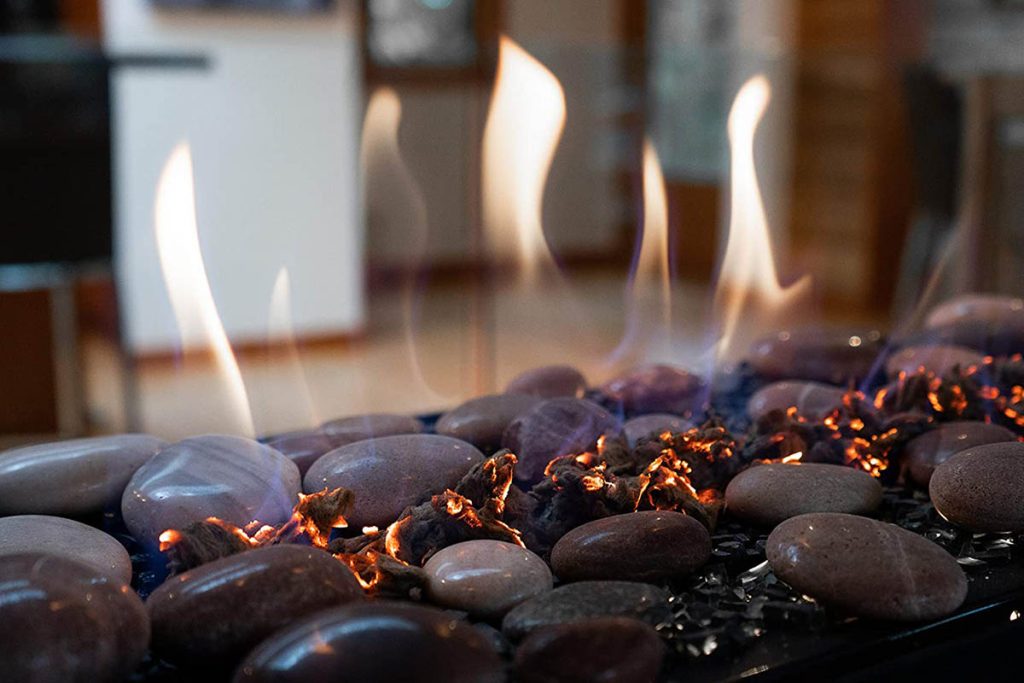
Additional features can enhance the direct vent gas fireplaces experience, such as air supply controls and emergency gas shut-off valves.
Air supply controls allow for adjusting the amount of oxygen supplied to the fire for optimal burning. At the same time, emergency gas shut-off valves provide added safety in case of a gas leak or other emergency.
Troubleshooting
Fireplaces commonly experience issues with the pilot flame, which can result from a dirty pilot assembly, a faulty thermocouple, or gas line supply problems. To ensure safe and efficient operation, it’s essential to have a professional inspect and repair any problems with the pilot lights of the gas fireplace.
How to Light a Gas Fireplace With a Control Panel
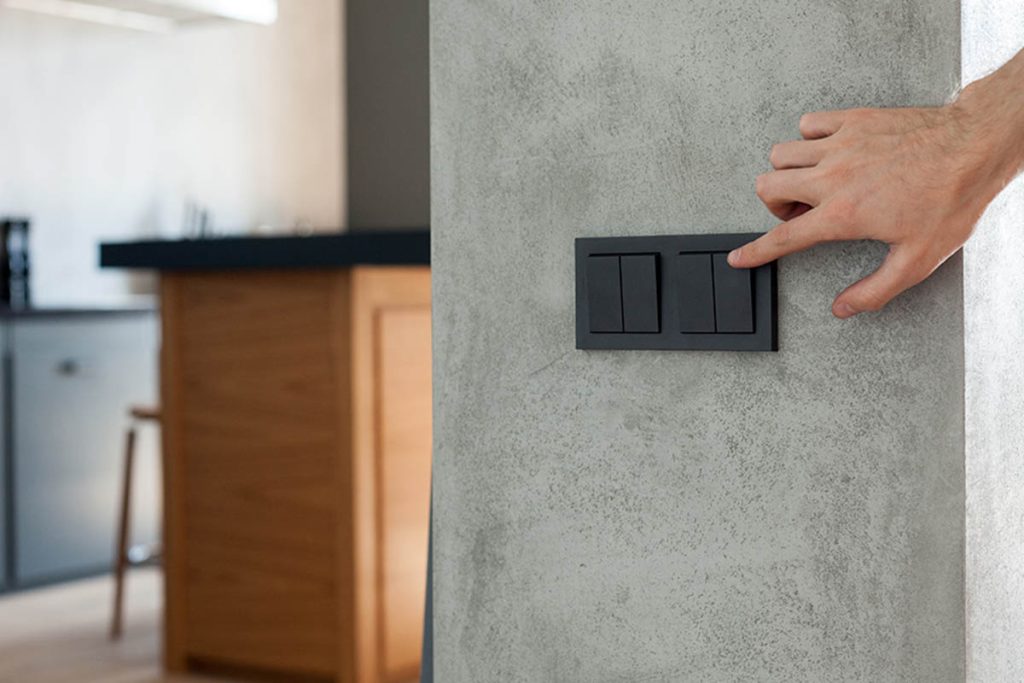
To light a gas fireplace with a control panel, first, check if the pilot flame is already lit. If it’s not, follow the manufacturer’s instructions to relight it.
This usually involves turning the control knob to the “off” position and waiting a few minutes before turning it back to “pilot.”
Once the pilot flame is standing, open gas valve on the access panel and press the ignition button to light the main burner flames. From there, you can adjust the flame size and heat output using the control panel, creating the perfect ambiance for your home.
FAQs
Do Gas Fireplaces Use a Lot of Gas?
The amount of gas used by a fireplace depends on the size of the very old gas fireplace and how often it is used. However, gas fireplaces work is generally more efficient than wood-burning fireplaces and therefore use less gas. Additionally, many fireplaces have features such as automatic shut-off and adjustable heat output, which can help reduce gas usage.
Do Gas Fireplaces Heat a Room?
Yes, gas fireplace works to heat to a room. The amount of heat produced depends on the size of the fireplace, the type of fuel being used, and the insulation and ventilation of the room. Some types of gas fireplaces also have blowers or fans to help circulate heat throughout the room.
What Are the Disadvantages of a Gas Fireplace?
While gas fireplaces have many advantages, there are also some potential disadvantages. Gas fireplaces require a source of fuel, either natural gas or propane, which can be expensive in some areas. Additionally, fireplaces require regular maintenance and inspections to ensure proper functioning and safety. Some people also prefer the ambiance and smell of a wood-burning fireplace, which a gas fireplace cannot replicate.
Do You Turn off a Gas Fireplace at Night?
Generally, it is recommended to turn off a gas fireplace before going to bed or leaving the house. Many fireplaces have automatic shut-off features, but it is essential to double-check that you have turned off the fireplace to ensure safety and prevent gas wastage. Moreover, leaving a gas fireplace on for extended periods can cause excess wear and tear on the unit and increase gas usage.
Conclusion
Gas fireplaces provide a convenient and efficient way to enjoy a warm and cozy fire without the hassle of traditional wood-burning fireplaces.
Understanding how they work, including the different ignition methods, venting options, and enhancing features, can help homeowners make informed decisions about their gas fireplace purchase and ensure safe and enjoyable use for years.

